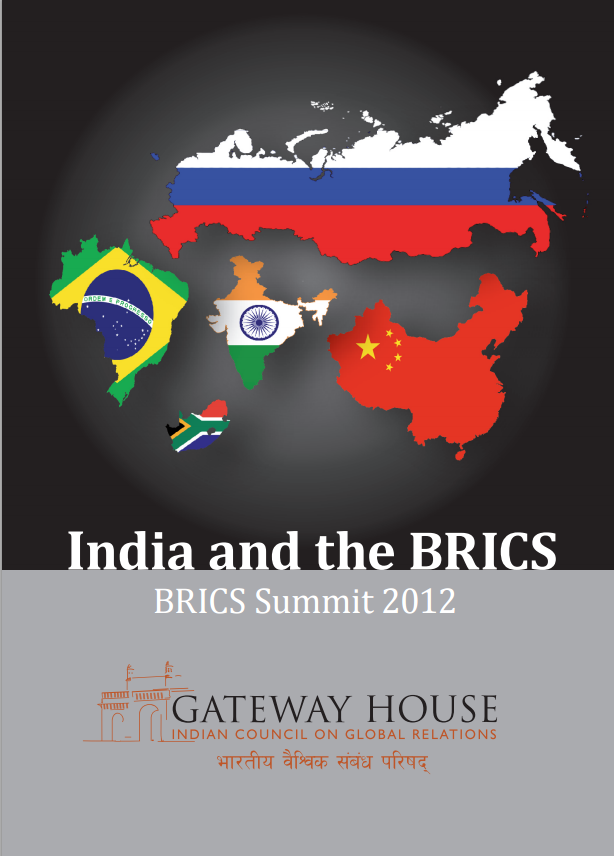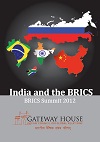
Introduction
Over the last decade, countries known under the emerging markets acronym of BRICS, have begun to seriously define their common interests and values. Brazil, Russia, India, China and South Africa have held three summits so far – in Russia, Brazil and China. On March 29, they will meet again, this time in New Delhi, with the goal of addressing the global economic condition, reforming financial and regulatory institutions and improving cooperation with each other on a host of international issues from starting a BRICS development bank to interchanging high tech skills. While these issues directly impact them, they also affect much of the developing world.
Though different in size and resources, the BRICS nations as a group are massive: they account for 45% of the world population, 25% of global GDP and 50% of recent global growth. Together, they have the potential to create a future model for others.
As an independent market-focused Indian think tank, Gateway House has been deeply invested in the future of India and its BRICS counterparts. What is the best way to develop affordable housing for large population nations? What is the best way to secure long term, manageable energy supplies? Can healthcare be delivered more efficiently, en masse, and to remote regions? How much sustained growth is required to making one of these large nations succeed? How can the inflation-growth trade-off be managed? Is there a better way to produce and deliver food than with only large scale enterprise? Can the BRICS be lenders of best resort for each other? How to best take advantage of the globalization of technology?
The summaries of research papers in this booklet begin to offer some answers. In “India-Brazil: Pioneers of a new development agenda,” researcher Estefanía Marchán examines the possibilities for India to bring affordable housing technology to Brazil, while Brazil offers its experience with programmes to develop profitable small farms and deliver cash payments with modern networks to the poor. Marchan then looks at how the lessons from India-Brazil cooperation might be passed on with good results to Africa.
In “India-Russia: Taking each other seriously,” Russia Studies research fellow Katherine Foshko looks at why a once-healthy India-Russia relationship has gone into quietude and suggests that a tech revival should be advanced. “Information technology in particular is an area where India should capitalize on the plethora of educated and talented Russian professionals and Russia can benefit from the size as well as the expertise of the Indian labor pool,” she writes.
Similarly, K. N. Vaidyanathan, the former executive director of India’s Securities and Exchange Board and senior Geo-economics Fellow, makes a case that India’s careful, deliberate approach to permitting financial derivatives on its exchanges protected it from the ravages of the 2008 global crash. It has created a model for BRICS and other developing countries, which are seeking to grow while insulating their financial markets from global shocks.
Renu Modi, an professor at the University of Mumbai who directed its African Studies Center, points out that while South Africa might have been inducted into the BRIC’s club as a “gift”, its greater as a gateway to the 1-billion-person African continent.
There are also cautionary notes. The two largest nations, Indian and China, are both experiencing slower growth, but their outcomes couldn’t be more different, write Gateway House executive director Manjeet Kripalani and adviser Bob Dowling. China is engineering a slowdown to encourage a consumer economy but India is heading for a dangerous stall that must be reversed. Meanwhile, researcher Samir N. Kapadia explains that while China is a friendly banker to BRICS, its lending comes with strings attached.
You can download the PDF version of this report, here.
This report and the articles within were exclusively written for Gateway House: Indian Council on Global Relations. You can read more exclusive content here.
For interview requests with the authors, or for permission to republish, please contact outreach@gatewayhouse.in.
© Copyright 2012 Gateway House: Indian Council on Global Relations. All rights reserved. Any unauthorized copying or reproduction is strictly prohibited.


